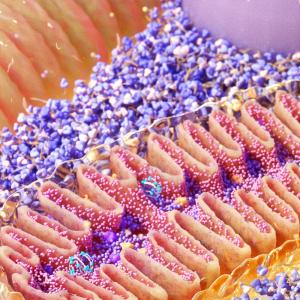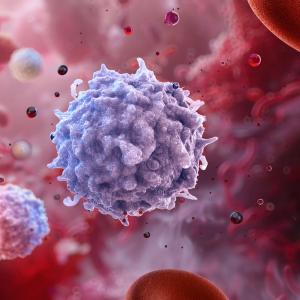NYU Langone Investigation Analyzed More Than 800 Coronavirus Genetic Samples to Trace the Path of the Virus as It Traveled Across the City

IMAGE: GETTY/Marco Bottigelli
The most populous boroughs in New York City, Queens and Brooklyn, likely served as the major hub of coronavirus disease (COVID-19) spread in the spring of 2020, a new study finds.
Led by researchers at NYU Grossman School of Medicine, the new investigation analyzed more than 800 coronavirus genetic samples to trace the path of the virus as it traveled across New York City during the pandemic’s deadly first wave. It identified Queens and, to a lesser extent, Brooklyn as the likely origin point of most cases sampled, with more cases circulating within their borders and spreading from these parts of the city into Manhattan and the outer boroughs than in the other direction.
“Our findings appear to confirm Queens’ role as the early epicenter of coronavirus transmission throughout the rest of the New York metropolitan area,” says study co-senior author Ralf Duerr, MD, PhD. “Now that we understand how viral outbreaks can spread between neighborhoods, we can better plan for future contagions and prioritize testing in the most vulnerable areas.”
Dr. Duerr, a research assistant professor in the Department of Pathology at NYU Langone, notes that if a disease that transmits similarly to the coronavirus strikes New York again, it could likely follow the same basic path through the region.
Although more research is needed to identify the underlying reasons behind the spread, the study researchers suspect that commuting likely played a key role. Dr. Duerr notes that 35 percent of Queens and Brooklyn workers travel daily to Manhattan by car, subway, and bus. In addition, both of the city’s main airports, LaGuardia Airport and John F. Kennedy International Airport, are located in Queens. That Black and Hispanic Americans, who were hit particularly hard by the pandemic, disproportionally use public transportation and live in these two boroughs may have been another possible factor, says Dr. Duerr.
Past studies revealed that the coronavirus first took root in New York in late February 2020, with more than a hundred separate outbreak sources bursting into chains of infection rather than from a single “patient zero.” However, the dynamics of viral spread within and between individual boroughs had remained unclear.
The new study, published May 20 in the journal PLOS Pathogens, was designed to precisely track the dispersal of the coronavirus within the five New York City boroughs and Long Island during the first wave of the pandemic, according to Dr. Duerr.
In gene sequencing, researchers compare small snips of genetic code to identify mutations that are only found in a particular strain of the virus. These “flags,” researchers say, can then be used to map when and where the strains had spread over time. This is similar to tests used to trace ancestry in people. Experts have previously used this technique to follow outbreaks of influenza, methicillin-resistant Staphylococcus aureus (MRSA), and Ebola, among others.
For the new investigation, the researchers analyzed viral genetic information gathered from hundreds of nasal swabs. Samples were taken from men and women who had tested positive for COVID-19 in New York City and on Long Island from March to May of 2020. Using the different mutation flags, the date the samples were collected, and patient ZIP codes, the study investigators created computer simulations that traced the virus’ path through the region. The research was carried out in the Genome Technology Center at NYU Langone.
They found that 8 out of 10 simulations pointed to Queens as the major hub of viral spread in the first wave of infection. Meanwhile, the other two simulations identified Brooklyn and the Bronx, respectively, as the pandemic epicenter, which the study authors say suggests that these two boroughs played important, albeit smaller, roles in viral transmission throughout the city.
Past research has relied on hospitalization data to infer how the outbreak traveled. The new findings, the study authors say, provide a more direct map of the infections’ movement.
“These gene sequencing and computer modeling techniques can be used by any community looking to track how a virus might spread when mass testing and contact tracing are in limited supply,” says study co-senior author Adriana Heguy, PhD.
Dr. Heguy, a professor in the Department of Pathology at NYU Langone, encourages other public health officials in the United States and abroad to use these methods to map how the pandemic spread in their cities as well.
She says the research team next plans to apply the methods used in the investigation to study coronavirus spread during the second wave of the pandemic in New York City.
Funding for the study was provided by National Institutes of Health grants U01 Al152151 and R01 AI122953. Additional research support came from the Fonds National de la Recherche Scientifique the Research Foundation—Flanders, and the Internal Funds KU Leuven in Belgium. The South African Medical Research Council provided further support.
In addition to Dr. Duerr and Dr. Heguy, other NYU Langone researchers were Matthew T. Maurano, PhD; Sitharam Ramaswami, PhD; Paul Zappile, MS; and Christian Marier, BSc. Other study co-investigators were Simon Dellicour, PhD; Samuel Hong, BA; Bram Vrancken, PhD; Guy Baele, PhD; and Mandev Gill, PhD, at the University of Leuven in Belgium; Antoine Chaillon, MD, PhD, at the University of California San Diego; and Gordon Harkins, PhD, at the University of the Western Cape in South Africa.
Media Inquiries
Shira Polan
Phone: 212-404-4279
shira.polan@nyulangone.org

